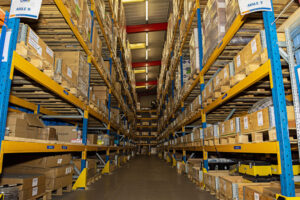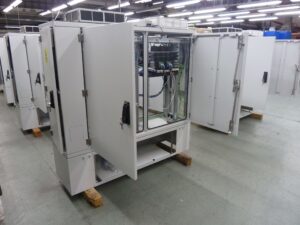For decades the UK’s rail sector has been a sleeping giant. While visionaries have hinted at the opportunity for digitalisation and modernisation, the reality is that much of the UK’s rail infrastructure has remained old, underfunded, and poorly connected. However, in a post Covid world, all that looks set to change. The rail sector, for too long a sleeping giant of commerce, is awakening and providing new opportunities for economic growth.
In today’s better connected, more data-led world, rail has a major opportunity to become the backbone of the country’s future growth once again. As passengers move towards more sustainable forms of transport and current geo-political events shorten supply chains and trigger an increase in reshoring, rail networks are becoming critical to the safe movement of goods and people.
This potential is being aided by funding and commitment by the UK Government. The much-talked about Crossrail project is close to receiving authorisation for commercial operations, while a recent announcement saw £84million worth of funding released for trackside upgrades and platform extensions in the North West.
As finance is injected into rail and modernisation projects begin, what exactly needs to be done to complete the reawakening of this historic and important transport link?
Improved communications infrastructure
One of the most critical resources required in any trackside upgrade is the need for improved communications infrastructure rail-side. The future of rail looks exciting:
- The ability to perform predictive maintenance whereby the behaviour and condition of every train component and subassembly is consistently captured in operation and recorded, instantly transmitting data to operators and businesses to enable them to make real-time decisions; changing routes when required or identifying potential repair work before it becomes a problem.
- Ticketless transportation for passengers who benefit from real-time updates on the location of their carriage, enabling them to plan their journey accordingly, rather than standing on empty platforms.
- Digitally controlled, electronic signalling systems which not only help optimise existing assets, but also create a much safer environment to maintain and operate railways.
None of this is possible without the installation of new materials and technologies for trackside services, for example data cabinets.
Traditionally, track-side data cabinets have been made from metal. While these can still be useful in a digitalised rail sector, the material can pose challenges when it comes to upgrades, maintenance and configuration for today’s advanced electronics and communications equipment. A successful alternative is polycarbonate. As rail modernisation programmes continue, we’ve seen increasing demand for our polycarbonate cabinets. Since they follow a modular design, our cabinets can be modified or upgraded in isolation, enabling internal equipment to be reconfigured and damaged parts replaced on site without any interruption to rail services.
A robust and resilient 5G network
Another crucial enabler of a more productive and successful railway infrastructure is a robust and resilient 5G network. This will enable the capture and collection of mass data, used for optimising routes, and helping to avoid rail congestion and delays. For 5G to be successfully deployed along long-distance routes, the need for trackside cables and loom assemblies increases. Furthermore, with processing demand continuous, its critical these electronics can be safely accessed, maintained and installed quickly without causing disruption.
Our unique Plug and Play solution for trackside assemblies can be used across a platform of applications requiring power, signal and data. It reduces time spent on site by fitting sockets into the base of the controller so cables can be plugged in to the base with no wiring to complete, as cables are pre-wired before being taken out in the field. Cable sets are pre-labelled to ease identification of install.
It is innovations such as our Plug and Play assembly solution and polycarbonate cabinets, which will provide the critical foundations of the UK’s current and future rail digitalisation and modernisation projects. As the country continues to accelerate its post Covid recovery, supply chains change and transportation demands continue to change, nationwide rail modernisation can both radically change passenger and user experiences, while ensuring safer, more secure and faster transportation routes for goods.
It looks like the giant is reawakening, and almost ready to get back to work.








